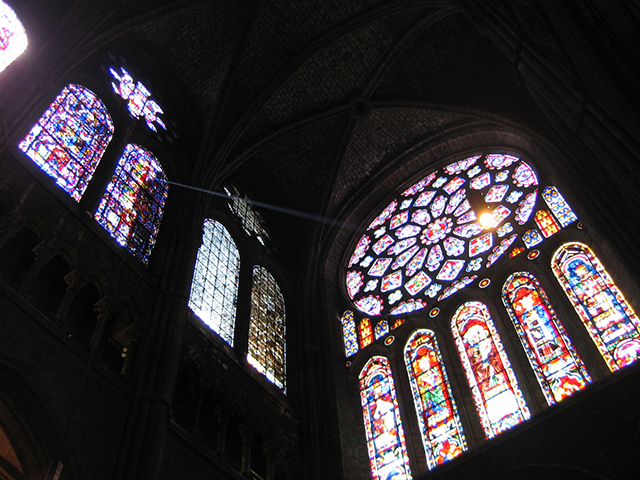Teach This Poem is a weekly series featuring a poem from our online poetry collection, accompanied by interdisciplinary resources and activities designed to help K-12 teachers quickly and easily bring poetry into the classroom.
Featured Poem
Chartres Cathedral’s North Rose Window

Classroom Activities
The following activities and questions are designed to help your students use their noticing skills to move through the poem and develop their thinking about its meaning with confidence, using what they’ve noticed as evidence for their interpretations.
- Warm Up (whip around or quick write): What associations do you have with the word window?
- Whole-class Research (before viewing the photograph): Where is Chartres and what is a rose window?
- Individual Writing and Pair Share: Write down what you notice in the image of the rose window at Chartres. Note the colors and the light. Where is the light coming from? Where is it going? How does it change along the way? What might the source of the light be? Share your observations with a partner.
- Reading the Poem: Read the poem silently, then record the words, phrases, and structures that jump out at you.
- Listening to the Poem (enlist two volunteers to read the poem aloud): Listen as the poem is read aloud and write down any additional words and phrases that jump out at you.
- Small-group Discussion: How is the fruit in the poem like a rose window? How is it different from a rose window? What is the relationship between the man and the fruit stand? Why do you think the speaker used the image of a rose window?
- Whole-class Discussion: How does the speaker describe paradise in this poem? Give evidence from the poem to support your answer. Why do you think the speaker in the poem talks about clear windows at the end of the poem? What might the clear windows be?
- Extension for Grades 7-10: Write an essay or poem about what you think paradise might be and why.
- Extension for Grades 11-12: Write an essay that answers the following questions: How are the lines organized in this poem? Why do you think the poet used tercets? How do the line breaks and tercets move the ideas in the poem forward? Are there any rhymes or alliteration in this poem? If so, where and what is the effect?
Read more about the framework upon which these activities are based.
